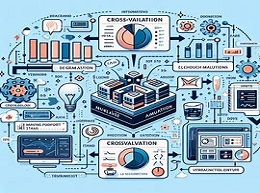Transfer Learning: Leveraging Pre-trained Models for Efficiency

Transfer Learning
Transfer learning is a machine learning technique that involves leveraging knowledge gained from solving one problem to help solve a different but related problem more efficiently. In recent years, transfer learning has gained significant attention in the field of artificial intelligence (AI) due to its ability to accelerate model training, improve performance, and reduce the need for large amounts of labeled data. In this article, we'll explore the concept of transfer learning, its applications, and how it's revolutionizing AI development.
Understanding Transfer Learning
Transfer learning works by transferring knowledge learned from one task, typically referred to as the source task, to another related task, known as the target task. Instead of training a model from scratch for the target task, transfer learning involves fine-tuning a pre-trained model that has already been trained on a large dataset for a related task. This approach allows the model to leverage the features and patterns learned from the source task and adapt them to the target task, resulting in improved performance and efficiency.
Benefits of Transfer Learning
Transfer learning offers several benefits for AI development:
-
Efficiency: By reusing pre-trained models, transfer learning reduces the computational resources and time required to train models from scratch.
-
Improved Performance: Transfer learning often leads to better performance on the target task, especially when the source and target tasks are related.
-
Reduced Data Requirements: Since pre-trained models have already learned meaningful representations from large datasets, transfer learning can be effective even with limited labeled data for the target task.
-
Domain Adaptation: Transfer learning enables models trained on data from one domain to be adapted for use in another domain, facilitating applications in diverse fields.
Types of Transfer Learning
Transfer learning can be categorized into several types based on the relationship between the source and target tasks:
-
Feature Extraction: In feature extraction, the pre-trained model's weights are frozen, and only the top layers are fine-tuned for the target task. This approach is suitable when the source and target tasks share similar low-level features.
-
Fine-Tuning: Fine-tuning involves updating the weights of the entire pre-trained model, allowing it to adapt to the specifics of the target task. This approach is effective when the source and target tasks are closely related.
-
Domain Adaptation: Domain adaptation focuses on transferring knowledge from a source domain with ample data to a target domain with limited or different data distribution. This approach is useful for adapting models trained on synthetic or labeled data to real-world scenarios.
Applications of Transfer Learning
Transfer learning finds applications across various domains, including computer vision, natural language processing, and healthcare. Here are some examples:
-
Image Classification: Transfer learning is commonly used in image classification tasks, where pre-trained models like VGG, ResNet, and MobileNet are fine-tuned on specific datasets to classify images into different categories.
-
Text Classification: In natural language processing, transfer learning is employed for text classification tasks such as sentiment analysis and document classification. Models like BERT and GPT are pre-trained on large text corpora and fine-tuned for specific classification tasks.
-
Medical Imaging: Transfer learning has shown promise in medical imaging applications, where pre-trained convolutional neural networks (CNNs) are adapted for tasks such as disease diagnosis and medical image segmentation.
Challenges and Considerations
While transfer learning offers many advantages, there are also challenges and considerations to be aware of:
-
Domain Shift: Differences in data distribution between the source and target tasks can lead to domain shift, affecting the model's performance on the target task.
-
Task Similarity: Transfer learning works best when the source and target tasks are closely related. Choosing an appropriate pre-trained model and fine-tuning strategy is crucial for achieving optimal performance.
-
Data Bias: Pre-trained models may inherit biases present in the training data, which can impact their performance and fairness in downstream tasks.
Transfer learning is a powerful technique that has revolutionized AI development by enabling efficient reuse of knowledge across tasks. By leveraging pre-trained models, developers can accelerate model training, improve performance, and address data limitations in various domains. As AI continues to advance, transfer learning will play an increasingly important role in driving innovation and unlocking new possibilities in artificial intelligence.














